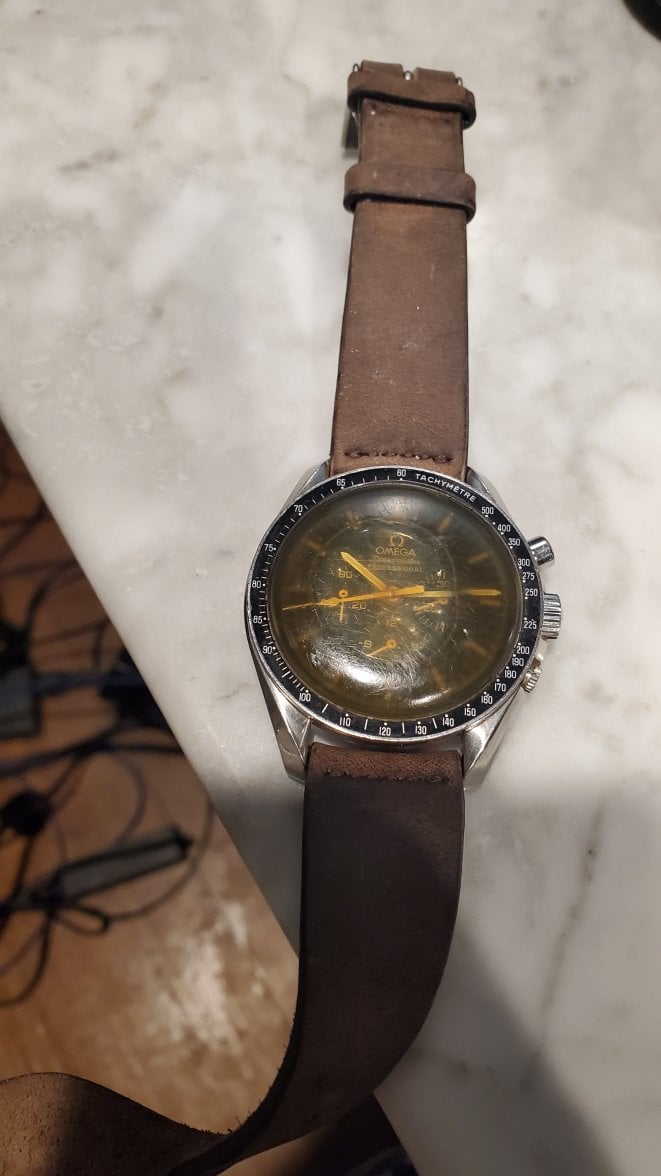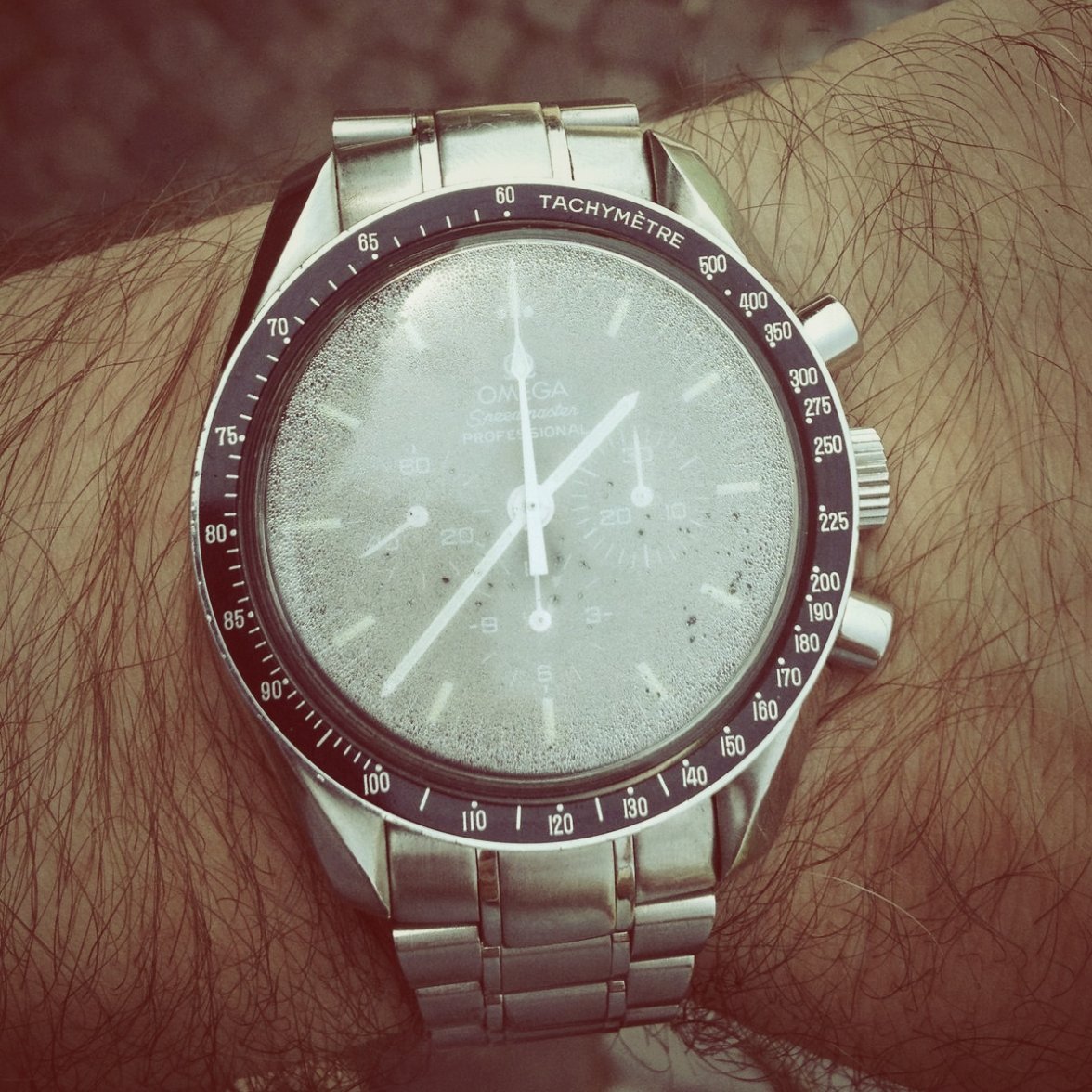fc3861
·Reading through the latest threads about not swimming with a Speedmaster because it's only 50m water resistant got me thinking (I know dangerous right?)
Assuming you know right away that you did get water in your watch, that is you see it sloshing around under the crystal, etc. What does it actually do that can't be just dried out and reassembled by a watchmaker assuming it's done in a reasonable amount of time before things start to rust. Wouldn't it be just a complete disassembly and lube similar to a normal full service?
Or, once a Speedmaster is soaked, is it junk? Do you pretty much need to replace the whole movement?
I'm just curious what the added expense would be beyond what you would get with a normal full service?
Assuming you know right away that you did get water in your watch, that is you see it sloshing around under the crystal, etc. What does it actually do that can't be just dried out and reassembled by a watchmaker assuming it's done in a reasonable amount of time before things start to rust. Wouldn't it be just a complete disassembly and lube similar to a normal full service?
Or, once a Speedmaster is soaked, is it junk? Do you pretty much need to replace the whole movement?
I'm just curious what the added expense would be beyond what you would get with a normal full service?





